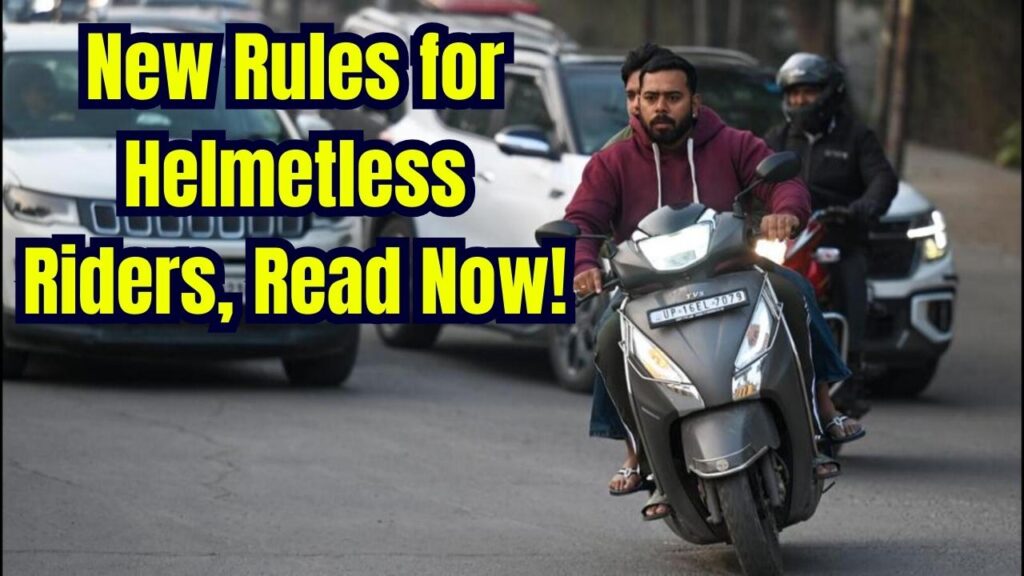
Riding a two-wheeler gives us unmatched freedom and convenience, but it also comes with serious responsibility. The Aligarh Traffic Police have recently issued a new circular targeting helmetless bike and scooter riders, signaling a stricter crackdown on traffic violations to ensure public safety.
Whether you’re a daily commuter, a parent, or a young adult learning to ride, this guide breaks it all down in a way that’s easy to understand and essential to follow.
Traffic Police Release Fresh Circular on Helmetless Bike & Scooter Riders
| Aspect | Details |
|---|---|
| Law in Focus | Section 129 of the Motor Vehicles Act, 1988 |
| Mandate | Helmet compulsory for both rider and pillion |
| Fine for Violation | ₹1,000 and/or license suspension for 3 months |
| Helmet Standard | Must bear ISI mark (BIS certified) |
| Enforcement | Circular recently issued by Aligarh Traffic Police |
| Official Website | MoRTH.gov.in |
| Exemption | Sikh riders wearing turbans |
| Campaign Hashtags | #HelmetSavesLives #RideResponsibly |
| Latest Accident Data | Over 44,666 deaths from two-wheeler accidents in 2022 (Source: NCRB) |
The fresh circular from Aligarh Traffic Police is more than just a directive—it’s a wake-up call for all two-wheeler users. Helmets save lives, and following the law not only protects you legally but also keeps you and your loved ones safe.
Let’s normalize helmet usage, not just to avoid fines, but to build a culture of road safety.
Why Is This Circular Important?
According to the National Crime Records Bureau (NCRB), two-wheeler accidents are among the leading causes of road fatalities in India. In 2022 alone, over 44,000 lives were lost due to two-wheeler crashes—many involving helmetless riders.
“The objective isn’t punishment, it’s protection. A helmet is not just a legal requirement—it’s your best defense in an accident.”
– Prashant Tomar, Traffic Inspector, Aligarh Police
Understanding the Helmet Law in India
Legal Basis
Under Section 129 of the Motor Vehicles Act, 1988, it is legally mandatory for:
- Both the driver and the pillion rider
- Riding any motorcycle, scooter, or moped
- To wear a helmet with an ISI mark
Non-compliance may result in:
- ₹1,000 Fine
- 3-month license suspension
- Mandatory road safety sessions
Objectives Behind the Circular
- Reduce fatalities
- Educate riders on legal and safety protocols
- Enforce compliance through penalties and awareness campaigns
- Encourage parents and schools to instill helmet habits early
Real Case: Helmet Saved a Life in Aligarh
Last month, a 21-year-old college student skidded on a wet road near Gandhi Park. He was wearing a full-face ISI-marked helmet. According to attending doctors, it saved him from a fatal skull fracture.
Had he been helmetless, the outcome could’ve been tragic.
How India Compares Globally
Countries like Australia, Japan, and Germany have 99% compliance rates for helmet usage due to:
- Strict penalties
- Public awareness
- Cultural discipline
In contrast, India has about 30–40% actual compliance, making enforcement efforts like Aligarh’s circular crucial and timely.
How to Choose a Helmet – A Quick Guide
| Feature | Why It Matters |
|---|---|
| ISI Mark | Ensures BIS-approved protection |
| Full-Face Design | Covers jaw, chin, skull |
| Good Fit | Should not wobble or press uncomfortably |
| Strap Locks | Prevents the helmet from flying off |
| Lightweight & Ventilated | Adds comfort for daily riders |
Avoid decorative or toy helmets—they’re dangerous and illegal.
Helmet Safety Starts at Home
- Encourage kids to see helmets as non-negotiable.
- Schools should host safety workshops.
- Parents riding with minors should lead by example.
- Reward helmet-wearing behavior early.
Motor Vehicle Act Update: Violating These 12 Traffic Rules Can Land You in Jail & Cost You Big
Big Change: Income Tax Bill 2025 to Tax Farming & Dairy Earnings!
Government & NGO Campaigns
Several national and local bodies are pushing for helmet awareness, such as:
- #WearHelmetSaveLife – Government of India
- Safe Drive, Save Life – Road safety mission in Uttar Pradesh
- SaveLIFE Foundation – NGO focused on accident prevention (savelifefoundation.org)
Related Resources
- Ministry of Road Transport & Highways
- BIS Helmet Certification Guide (PDF)
- Aligarh Traffic Police Instagram
Frequently Asked Questions (FAQs)
Q: Can pillion riders be fined too?
Yes, both the rider and pillion must wear helmets. Fines apply to both.
Q: What helmets are banned?
Half helmets, decorative helmets, and helmets without ISI marks.
Q: What if I’m riding in my colony or a short distance?
The law applies regardless of distance. Accidents happen close to home too.
Q: Is there an age limit for helmet use?
Children above age 4 are legally required to wear helmets.
Q: Can helmets expire?
Yes. Replace your helmet every 3–5 years, or after any impact.







